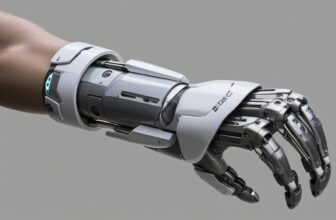
How Does Apple Use Artificial Intelligence?
Artificial intelligence (AI) has become a pivotal force in shaping modern technology, and Apple Inc. has been at the forefront of leveraging AI to revolutionize user experiences. Unlike some of its competitors who showcase AI-centric products, Apple integrates AI seamlessly into its hardware, software, and services, enhancing functionality and enriching the lives of its users. This article delves into how Apple employs AI across its ecosystem, from personalized user experiences to transformative innovations in health, privacy, and beyond.
AI in Apple Devices
1. Siri: The Intelligent Assistant
Siri, Apple’s virtual assistant, is one of the most recognizable examples of AI in the company’s ecosystem. Introduced in 2011, Siri has evolved significantly, using advanced natural language processing (NLP) and machine learning (ML) algorithms to understand and respond to user queries.
- Voice Recognition: Siri employs AI to recognize different accents, dialects, and languages, making it accessible to a global audience. With continuous updates, Siri’s contextual understanding has improved, enabling more natural and fluid conversations.
- Proactive Suggestions: Siri uses AI to provide personalized suggestions, such as recommending apps, sending reminders, or alerting users about upcoming events based on their calendar and usage patterns.
2. Neural Engine in Apple’s Processors
Apple’s custom-designed chips, such as the A-series (for iPhones and iPads) and M-series (for Macs), include a Neural Engine specifically designed for AI and ML tasks. This hardware enables:
- On-Device Processing: By handling AI computations locally, Apple ensures faster performance and enhanced privacy, as sensitive data doesn’t need to be sent to external servers.
- Augmented Reality (AR): The Neural Engine powers AR features like those in ARKit, enabling real-time scene analysis and object detection for applications in gaming, education, and retail.
AI in Software and User Experience
1. Face ID and Touch ID
Apple’s biometric authentication systems, Face ID and Touch ID, are prime examples of AI in action:
- Face ID: Using a combination of infrared sensors, depth mapping, and neural networks, Face ID analyzes over 30,000 invisible dots on a user’s face to create a detailed 3D model. It adapts over time, recognizing changes in appearance such as facial hair or glasses.
- Touch ID: The fingerprint recognition system relies on AI to ensure accuracy and security, learning subtle changes in a user’s fingerprint over time.
2. Photos App
The Photos app leverages AI to organize and enhance the user’s photo library:
- Object and Scene Recognition: AI identifies people, objects, and locations within photos, making it easier to search for specific memories.
- Memories Feature: Using machine learning, the app curates personalized photo and video collections based on events, locations, and individuals.
- Editing Tools: AI powers advanced editing features such as automatic adjustments for lighting, contrast, and color.
3. Keyboard and Predictive Text
Apple’s QuickType keyboard uses AI for predictive text and autocorrect features:
- Contextual Predictions: AI analyzes the user’s typing habits to suggest relevant words and phrases.
- Multilingual Support: The system can detect and adapt to multiple languages, providing seamless suggestions.
AI in Health and Wellness
1. Apple Watch and Health Insights
The Apple Watch exemplifies Apple’s commitment to using AI for health and wellness:
- Activity Tracking: Machine learning algorithms analyze data from sensors to provide insights into physical activity, heart rate, and calorie expenditure.
- ECG and Irregular Heart Rhythm Notifications: AI processes data from the watch’s sensors to detect potential heart health issues, such as atrial fibrillation, empowering users to seek timely medical advice.
- Sleep Tracking: Advanced AI models track sleep patterns, offering insights to improve sleep quality.
2. Fitness+ and Personalized Workouts
Apple Fitness+ uses AI to create tailored workout experiences:
- Adaptive Recommendations: Based on a user’s activity history and preferences, Fitness+ suggests workouts and trainers.
- Real-Time Metrics: AI integrates data from the Apple Watch to display real-time performance metrics, such as heart rate and calorie burn, during workouts.
AI in Privacy and Security
Apple’s emphasis on privacy sets it apart in the AI landscape. The company’s approach involves using AI to enhance user security while minimizing data exposure.
1. Differential Privacy
Apple employs differential privacy to gather user data anonymously. By adding random noise to data before analysis, Apple ensures individual user identities remain protected while still gaining insights to improve services like Siri and QuickType.
2. On-Device AI
Many AI-powered features, such as Face ID, Siri, and keyboard suggestions, run directly on the device. This reduces the need to transmit sensitive information to cloud servers, minimizing the risk of data breaches.
AI in Accessibility
Apple’s commitment to inclusivity is evident in its use of AI to enhance accessibility features:
1. VoiceOver
VoiceOver, Apple’s screen reader, uses AI to provide spoken descriptions of on-screen content, making devices accessible to visually impaired users.
2. Live Captioning
AI enables real-time transcription of audio and video content, assisting users with hearing impairments.
3. AssistiveTouch and Motion Control
AI powers gesture recognition and motion control features, allowing users with limited mobility to navigate devices effortlessly.
AI in Services and Ecosystem
1. Apple Music
AI enhances the Apple Music experience through:
- Personalized Playlists: Machine learning algorithms analyze listening habits to curate playlists like “For You” and “New Music Mix.”
- Song Recommendations: AI suggests tracks based on user preferences and listening history.
2. App Store and Search
AI improves the App Store’s search and recommendation system by:
- Context-Aware Search: AI understands user intent to deliver more relevant results.
- Personalized Recommendations: Based on past downloads and preferences, AI suggests apps tailored to the user’s needs.
3. Maps and Navigation
Apple Maps uses AI to provide accurate and efficient navigation:
- Real-Time Traffic Updates: Machine learning models analyze traffic data to suggest optimal routes.
- Enhanced Mapping: AI processes satellite imagery and user feedback to improve map accuracy and detail.
AI in Emerging Technologies
1. Augmented Reality (AR)
Apple’s ARKit framework leverages AI to create immersive AR experiences. By combining data from device cameras and sensors, ARKit enables applications ranging from gaming to interior design.
2. Computational Photography
AI plays a central role in enhancing camera capabilities on Apple devices:
- Smart HDR: AI combines multiple exposures to produce photos with greater detail and balanced lighting.
- Night Mode: Machine learning optimizes low-light photography by reducing noise and enhancing clarity.
- Deep Fusion: AI processes pixel-by-pixel analysis to deliver photos with exceptional texture and detail.
Apple’s Vision for AI
Apple’s approach to AI is guided by three core principles:
1. User-Centric Design
Apple prioritizes creating AI technologies that enhance user experiences without overwhelming them with complexity.
2. Privacy-First Philosophy
By focusing on on-device AI and differential privacy, Apple ensures that user data remains secure.
3. Seamless Integration
Rather than promoting AI as a standalone feature, Apple integrates it seamlessly into its ecosystem, making it an invisible yet indispensable part of the user experience.
Apple’s innovative use of artificial intelligence has transformed its products and services, offering users unparalleled convenience, personalization, and security. From the Neural Engine powering advanced computations to AI-driven health insights and accessibility features, Apple demonstrates how AI can be both powerful and responsible. As technology continues to evolve, Apple’s commitment to integrating AI with privacy and user-centric design ensures that its innovations remain at the forefront of the industry.





